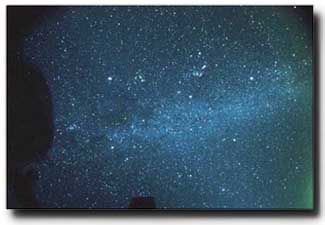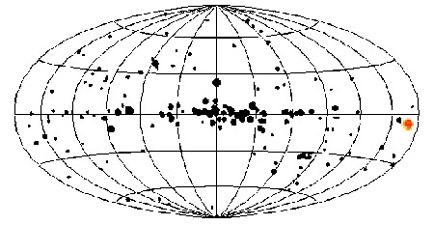Understanding the Map
Here is how to understand the map: Imagine yourself standing on the Earth. You look into the galactic plane and see a milky band of stars. This is our galaxy, the Milky Way Then you look along the sides of the Milky Way and see other celestial objects. Can you identify the Milky Way in this picture of the sky?

On the black and white map, the Milky Way is in the middle; it stretches from left to right. It is where most of the stars we see in the sky are clustered. Most of the objects that are not in the Milky Way are either above or below the cluster of stars on the map, just as they were in the picture of the sky. However, an object is not necessarily in the Milky Way if it looks like it is in the central cluster of stars. Furthermore, an object is not necessarily outside the Milky Way if it is not in the central cluster. How do we explain this?

Lets begin by looking at some diagrams which will help explain the way this map really works.


